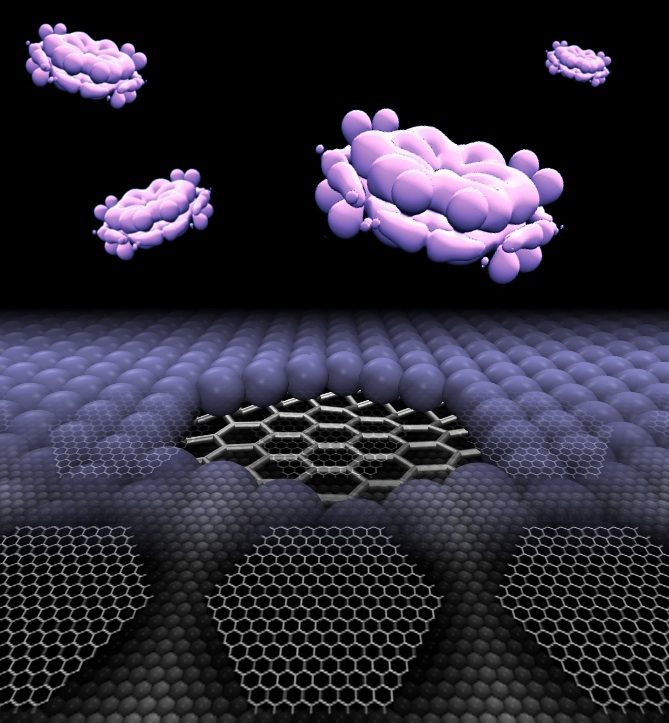Quantum dots created in graphane
May 26, 2010
Rice University physicists have discovered that removing islands of hydrogen from both sides of a graphane matrix leaves a well with all the properties of quantum dots.
Graphane is graphene (a form of carbon) modified by adding hydrogen atoms to both sides of the matrix. Quantum dots are crystalline molecules that interact with light and magnetic fields and have semiconducting properties.
Along with optical applications, the quantum dots may be useful in single-molecule sensing and could lead to very tiny transistors or semiconductor lasers.
More info: Rice University news

